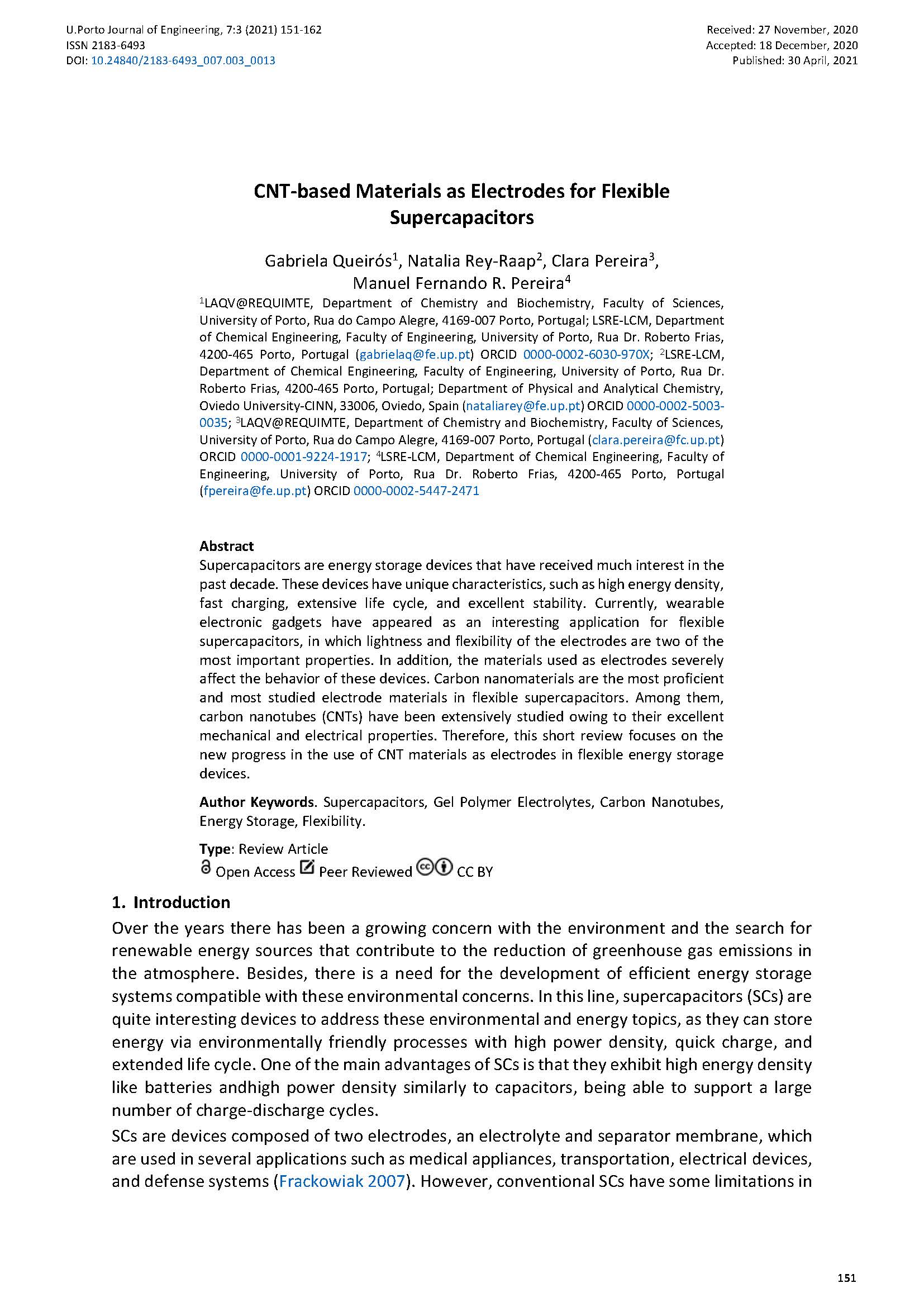CNT-based Materials as Electrodes for Flexible Supercapacitors
Main Article Content
Abstract
Supercapacitors are energy storage devices that have received much interest in the past decade. These devices have unique characteristics, such as high energy density, fast charging, extensive life cycle, and excellent stability. Currently, wearable electronic gadgets have appeared as an interesting application for flexible supercapacitors, in which lightness and flexibility of the electrodes are two of the most important properties. In addition, the materials used as electrodes severely affect the behavior of these devices. Carbon nanomaterials are the most proficient and most studied electrode materials in flexible supercapacitors. Among them, carbon nanotubes (CNTs) have been extensively studied owing to their excellent mechanical and electrical properties. Therefore, this short review focuses on the new progress in the use of CNT materials as electrodes in flexible energy storage devices.
Downloads
Article Details

This work is licensed under a Creative Commons Attribution 4.0 International License.
Authors who publish with this journal agree to the following terms:
- Authors retain copyright and grant the journal right of first publication with the work simultaneously licensed under a Creative Commons Attribution License that allows others to share the work with an acknowledgement of the work's authorship and initial publication in this journal.
- Authors grant the journal the rights to provide the article in all forms and media so the article can be used on the latest technology even after publication and ensure its long-term preservation.
- Authors are able to enter into separate, additional contractual arrangements for the non-exclusive distribution of the journal's published version of the work (e.g., post it to an institutional repository or publish it in a book), with an acknowledgement of its initial publication in this journal.
- Authors are permitted and encouraged to post their work online (e.g., in institutional repositories or on their website) prior to and during the submission process, as it can lead to productive exchanges, as well as earlier and greater citation of published work (See The Effect of Open Access).

